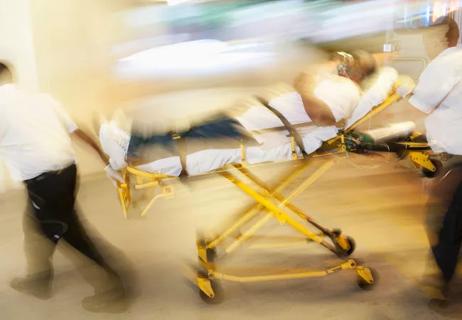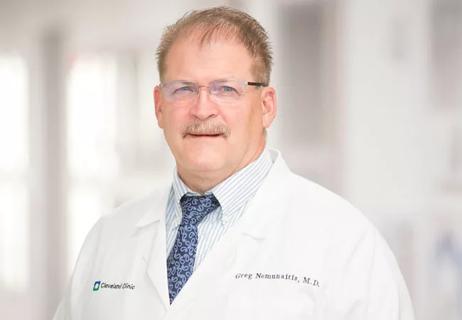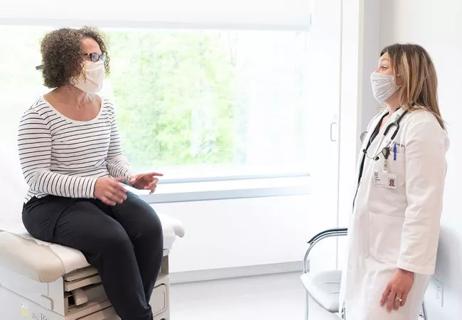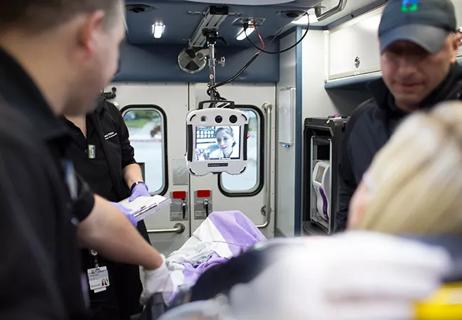Advertisement
From gene therapy for SMA to headache advances, big things are afoot in our field

Advertisement
Cleveland Clinic is a non-profit academic medical center. Advertising on our site helps support our mission. We do not endorse non-Cleveland Clinic products or services. Policy
The recent American Academy of Neurology (AAN) annual meeting in Los Angeles was filled with presentations that suggest this could prove to be quite a consequential year in neurology. Here are 5 top takeaways from what I saw and heard at the meeting.
The FDA-approved antisense RNA treatment nusinersen is already helping many kids with this autosomal recessive genetic disorder, but even more potentially transformative is the gene therapy work being done that’s having absolutely remarkable results. Some of this work was published a few months ago in the New England Journal of Medicine, and at the meeting in Los Angeles there were photos and videos of kids treated with gene therapy walking and meeting their milestones. This is a major development in a formerly fatal disease. As exciting as this progress is on its own, there is even more excitement around the potential for gene therapy technology like this to be extended to other monogenic disorders in the future.
There are still some technical aspects to figure out, and there is no standard research or commercial assay yet, but NfL appears to be a strong marker of multiple sclerosis (MS) disease activity and predicts long-term outcomes when analyzed from banked serospecimens. Results of analyses of banked serum samples from large clinical trials presented at this meeting — one by Dr. Peter Calabresi and another by Dr. Maria Pia Sormani — strengthened the case for NfL as a highly sensitive marker of disease activity that may be useful as a baseline predictor of risk and as a tool to monitor patients on therapy for persistent disease activity.
There were two additional high-profile presentations in the MS disease space:
Advertisement
During the “Controversies in Neurology” plenary session, Dr. Michael Weiner from UCLA presented the case for a more objective diagnosis of Alzheimer’s disease (AD) — certainly for clinical trials and perhaps in clinical practice — using beta-amyloid PET, CSF tau level and genotype. The sensitivity and specificity of a clinical diagnosis alone is quite low: Data from the Alzheimer’s Disease Neuroimaging Initiative show that 40 percent of patients with a clinical diagnosis of mild cognitive impairment (MCI) have no evidence of amyloid deposition on amyloid PET. In other words, without supportive testing, neurologists currently have the potential to misdiagnose MCI almost half the time.
The high costs of imaging and CSF testing remain important issues, and neurologists are going to be reluctant to subordinate the importance of the clinical exam. And while the certain establishment of a diagnosis is not an urgent issue in the current therapeutic environment, this would change if a disease-modifying therapy for AD were to become available, as the ability to select patients for early therapy would be critical. A movement toward presymptomatic biological diagnosis and treatment for neurological diseases is sure to be the wave of the future.
In a plenary session on therapeutic advances in headache disorders, Dr. Matthew Robbins of Montefiore Medical Center presented exciting progress. The first calcitonin gene-related peptide (CGRP) inhibitor, erenumab, may be approved by the FDA later this month following publication of phase 3 trial results late last year. Additionally, multiple devices for migraine and trigeminal neuralgia treatment have gained FDA approval and can be especially helpful in women of childbearing age who prefer not to be on chronic medications.
Dr. Richard Nowak from Yale University School of Medicine presented results of a multicenter clinical trial of rituximab in acetylcholine receptor antibody-positive myasthenia, conducted by the Network for Excellence in Neuroscience Clinical Trials (NeuroNEXT). The primary outcome of the study — a ≥ 75 percent reduction in the average daily dose of prednisone between 4 to 52 weeks after treatment — was not met, with a 60 percent mean reduction for patients on rituximab versus a 56 percent reduction among those on placebo (odds ratio = 1.14; 90% CI, 0 to 2.41).
Dr. Bermel is Director of the Mellen Center for Multiple Sclerosis Treatment and Research in Cleveland Clinic’s Neurological Institute.
Advertisement
Advertisement

Analysis characterizes geography’s sizable role in urban/rural care divides

New analysis details the disparities and points to opportunities for improvement

In survey, both female and male respondents reporting ongoing concerns

Group advocates for stroke systems of care supported by telestroke and proper reimbursement

Dr. Gregory Nemunaitis looks to build on his history of integrating education, research and patient care

Mission centers on screening, prevention for at-risk women in their 30s to 60s

One-year results from national database confirm enduring benefits

Q&A with Dr. Andrew Russman, Medical Director of our Comprehensive Stroke Center